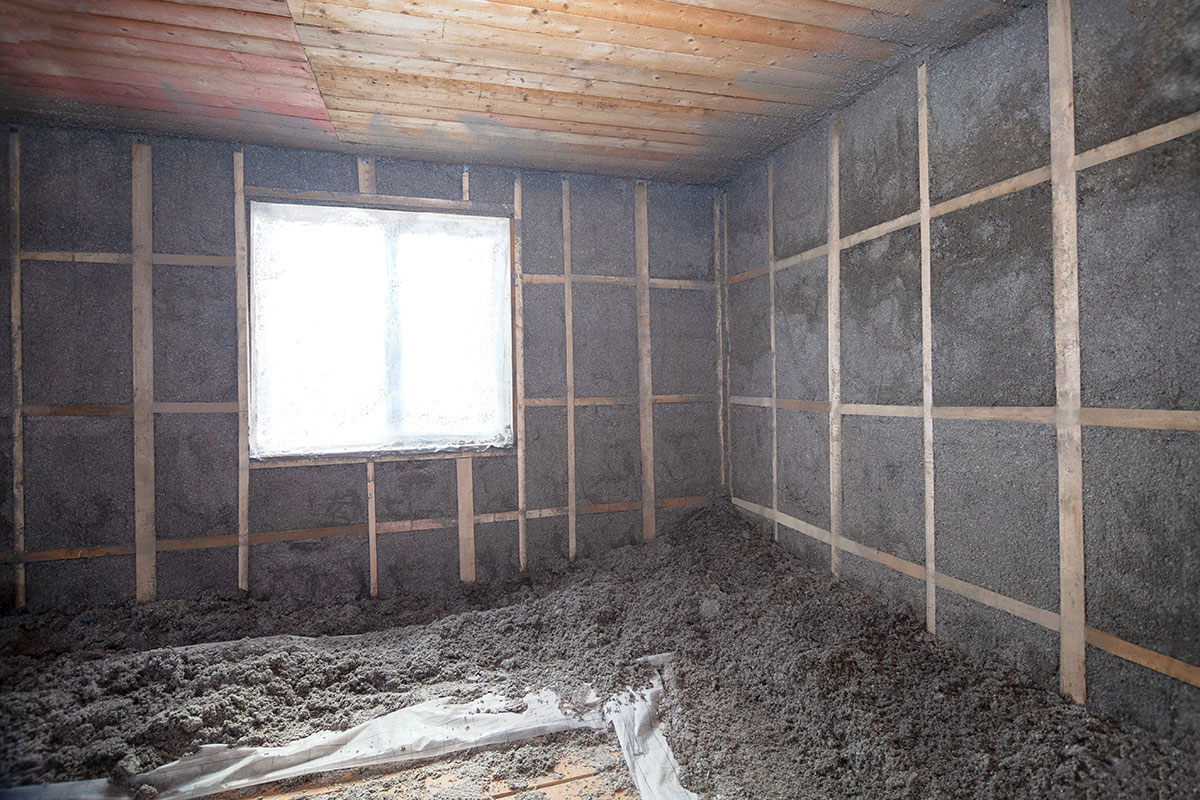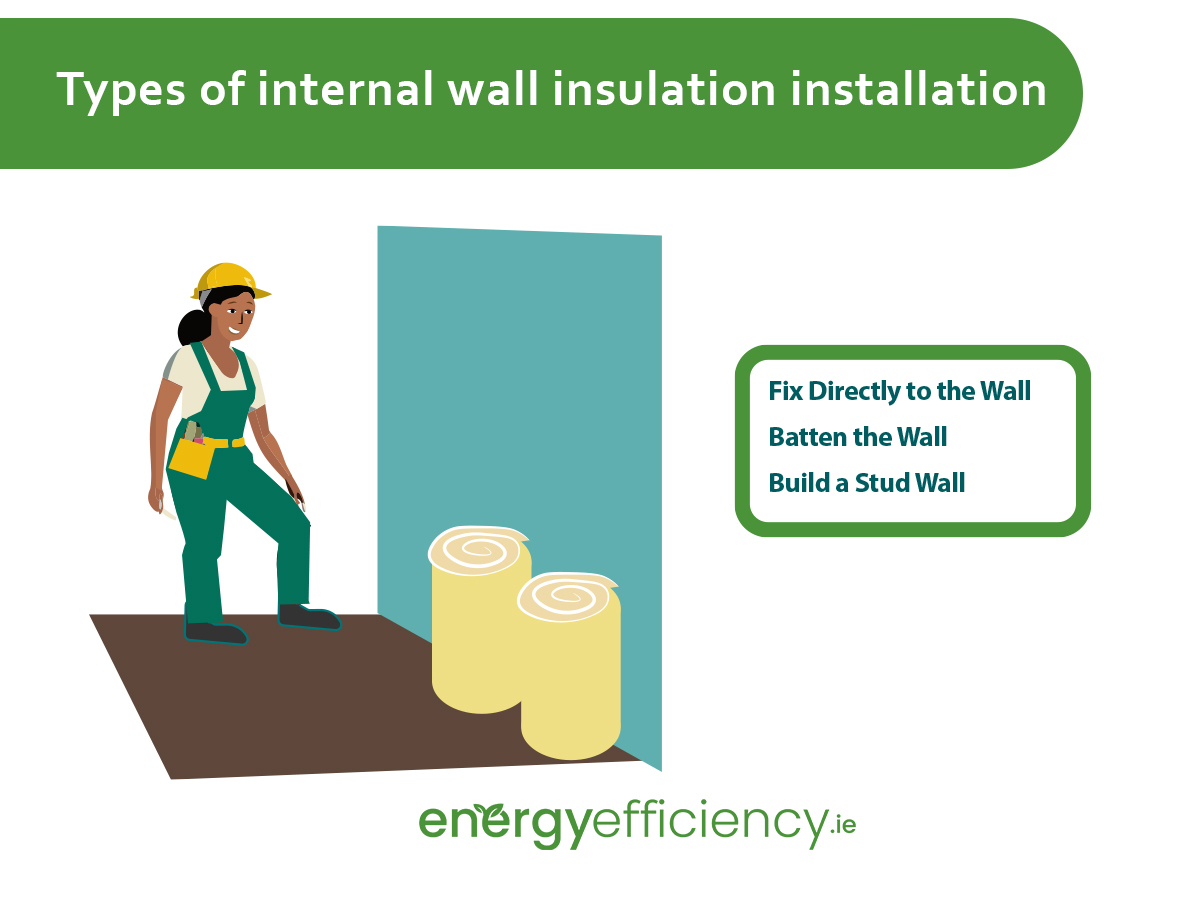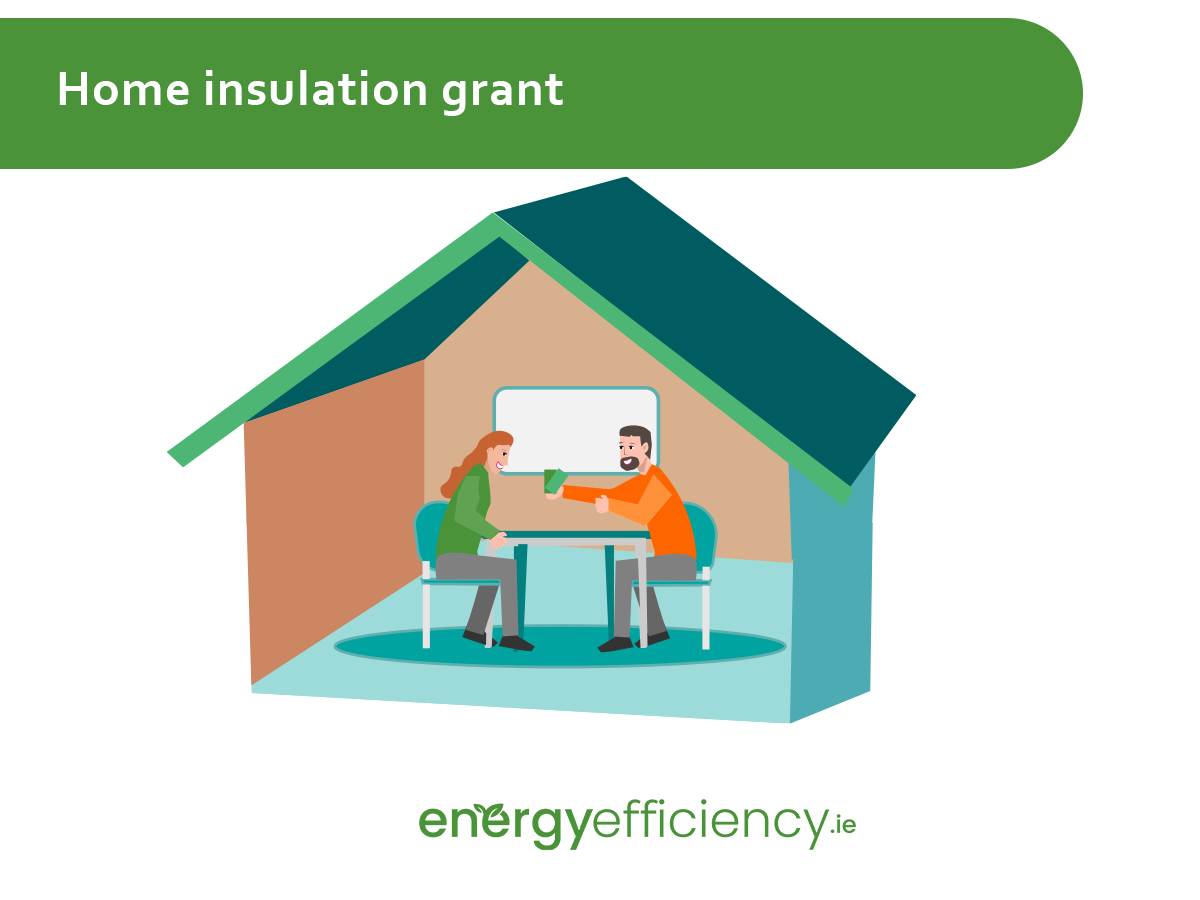If the walls of your house are not doing a good enough job of keeping in heat then this could leave you with higher energy bills and a less comfortable home.
Internal Wall Insulation consists of layers of insulation material applied to the inside face of a house’s external walls to improve their thermal performance.
Adding boards of solid insulation or wool insulation batts to the walls of older solid wall homes can help to make your home more comfortable and save money on heating bills by keeping the heat inside during winter, and out during summer.
Already a less expensive option than external wall insulation, grants for home insulation from the SEAI can make this an affordable option for homeowners.

The key takeaways:
Table of Content
What is Internal Wall Insulation
Internal Wall Insulation is a system where insulation, usually in the form of rigid boards, is affixed to the inside surface of a building’s exterior walls in order to reduce heat loss.
Up to 30% of a home’s heat can be lost through its external walls if they are not properly insulated, and solid walls without a cavity are particularly susceptible to this.
A full internal wall insulation system will consist of the insulation itself, along with a vapour layer on top to prevent issues with damp, and a plaster finish to complete.
Other works involved with internal insulation projects will include removing and reinstalling fitting and fixtures, window sills, and door frames.
Should I Get Internal Wall Insulation
If your house or other property was built prior to the 1930s it will likely be a solid masonry wall of brick or stone, which can have a very poor thermal performance.
Internal Wall Insulation is mostly commonly seen as an option for older buildings with solid walls which lack a cavity space. Without the cavity to fill, the insulation must be fixed to the internal or external faces of the walls.
Internal Wall Insulation can be a more affordable and convenient option than than external insulation since it covers a smaller area than on the outside of the property, and can even be done room by room for less disruption and more manageable expenses.
One of the things to consider when deciding on Internal or External Wall Insulation is that while it may be cheaper, it will result in a loss of internal floor space.
Internal vs External Wall Insulation
Pros
| Internal Wall Insulation |
| Less Expensive than External Insulation (up to 50% cheaper) |
| It can be installed room by room to minimise disruption. |
| Easier option where external insulation is not permitted |
| Typically does not require planning permission |
| External Wall Insulation |
| Better thermal performance than internal insulation |
| There is little to no disruption to your home life, as all work is outside |
| Adds an aesthetic improvement to older homes |
Cons
| Internal Wall Insulation |
| Loss of Floor Space |
| Can create added labour costs when with fixtures and fittings |
| It is less effective than external wall insulation |
| External Wall Insulation |
| Significantly more Expensive than Internal Insulation |
| Can have planning issues |
Internal Wall Insulation Installation
How insulation is fixed to the internal walls of your home will depend on the type of insulation material being used.
All of these methods have their own advantages and disadvantages. One thing which you should consult with your contractor on ensuring that you have a continuous vapour layer to prevent damp.

Insulation Components
There are multiple elements and layers to any internal wall insulation system. Some of these are dependent on the type of insulation and the manner of its installation. For example, many rigid insulation board products will combine a vapour layer and a smooth plaster finish for the side facing into your home.
Internal Wall Insulation Cost
The price of internal insulation will be determined by a number of factors related to your property and the insulation materials itself.
The simplest part of course is that the larger the area of wall space which needs to be insulation, and the higher the insulation quality, the more expensive the project will become.
There are other areas, however, which can also substantially drive up the labour and installation costs of a project like this.
All of these can drive up the labour cost of having insulation installed as they will take longer to reinstall, and may require additional work from electricians and plumbers.
Depending on the materials used and the labour requirements, internal wall insulation in Ireland typically costs in the region of €80 – €130 per square metre. This is only a rough estimate, however, and the true cost is entirely dependent on the property.
Grants for Internal Wall Insulation
The SEAI provides grant funding to help homeowners and housing bodies with the costs of having their property retrofitted with drylining internal insulation.
These grants are available to all homeowners, including private landlords and approved housing bodies. The only real requirement for the grant is that the house must have been built and occupied prior to 2011.
Approved Housing Bodies can receive higher value grants per property than other private homeowners and landlords.

| Insulation Type | Private Grant Value | AHB Grant Value |
| Internal Insulation (Dry Lining) | Apartment (Any) – €1,500
End-Terrace House – €2,000 Semi-Detached/End-Terrace – €3,500 Detached House – €4,500 |
Apartment (Any) – €2,000
End-Terrace House – €2,500 Semi-Detached/End-Terrace – €4,250 Detached House – €5,500 |
Note: Building regulations require that any alterations affecting 25% or more of a home’s surface area must achieve a minimum B2 BER rating, or that your heating system and attic insulation must comply with the required regulations.
Any application for an SEAI grant for internal insulation must meet these requirements for it to be paid.
FAQs

Get in Touch
Get in touch to hear more about how Home Insulation can improve your home life today. Speak with the experts to get a recommendation and quote on what home improvements will suit you best.










